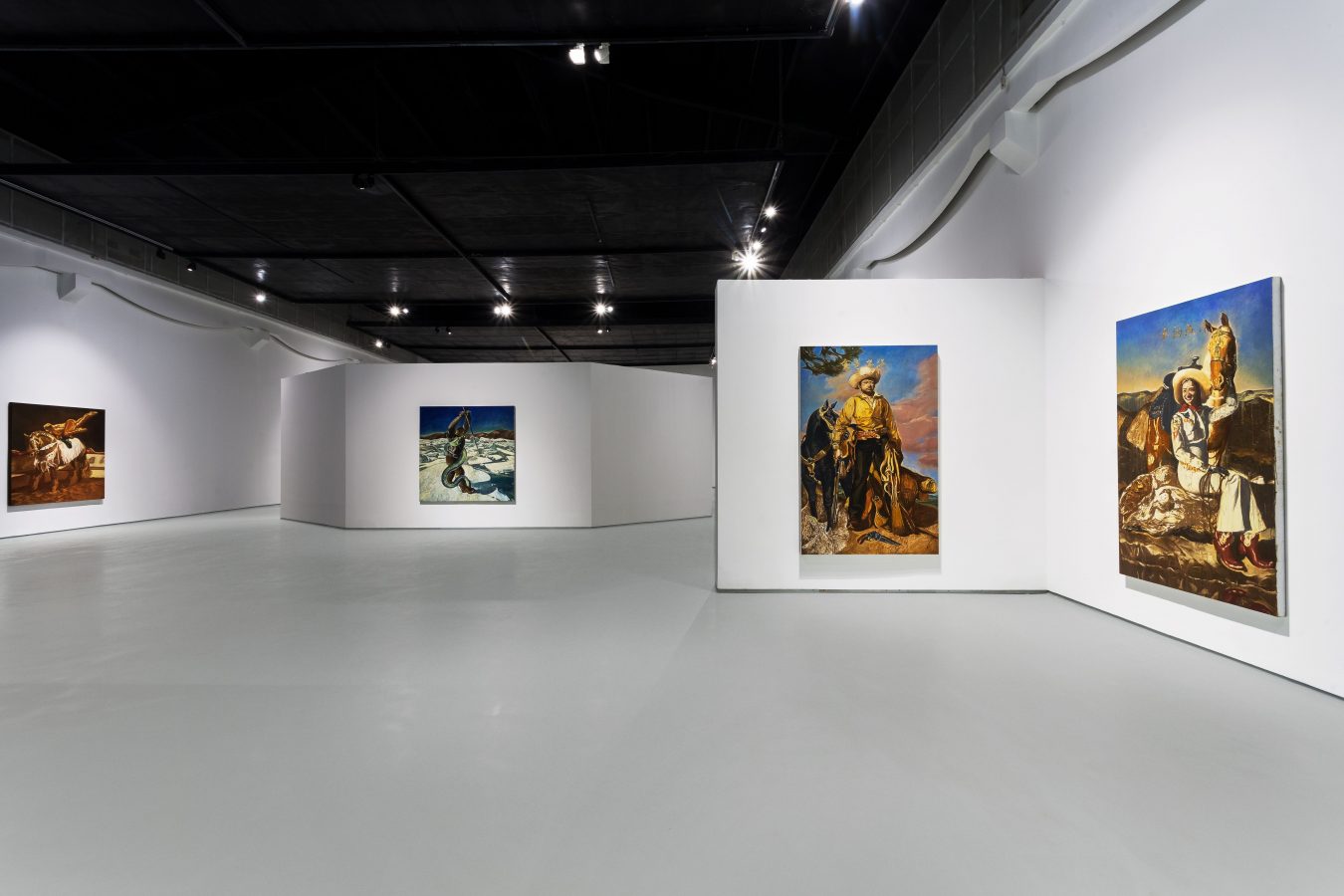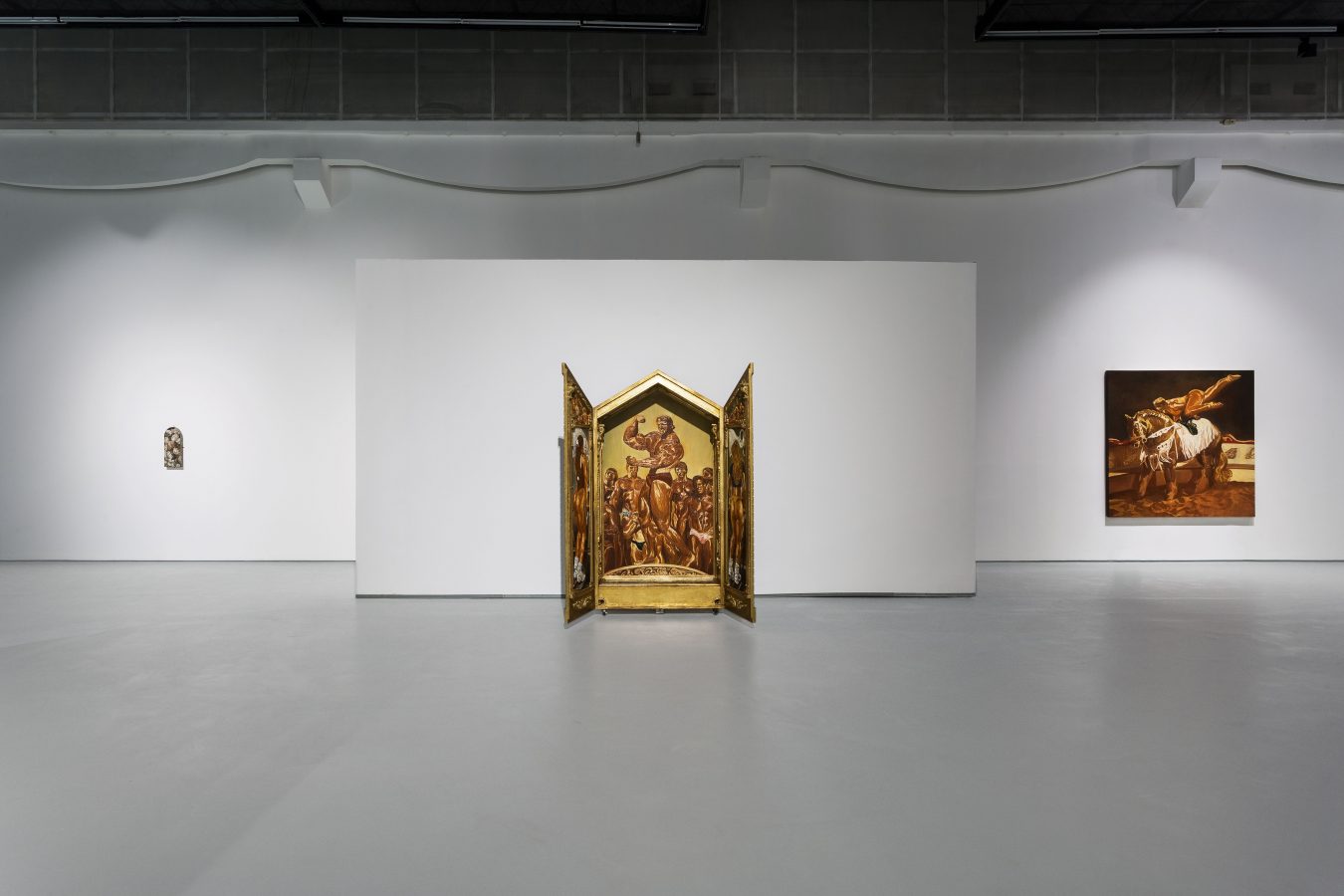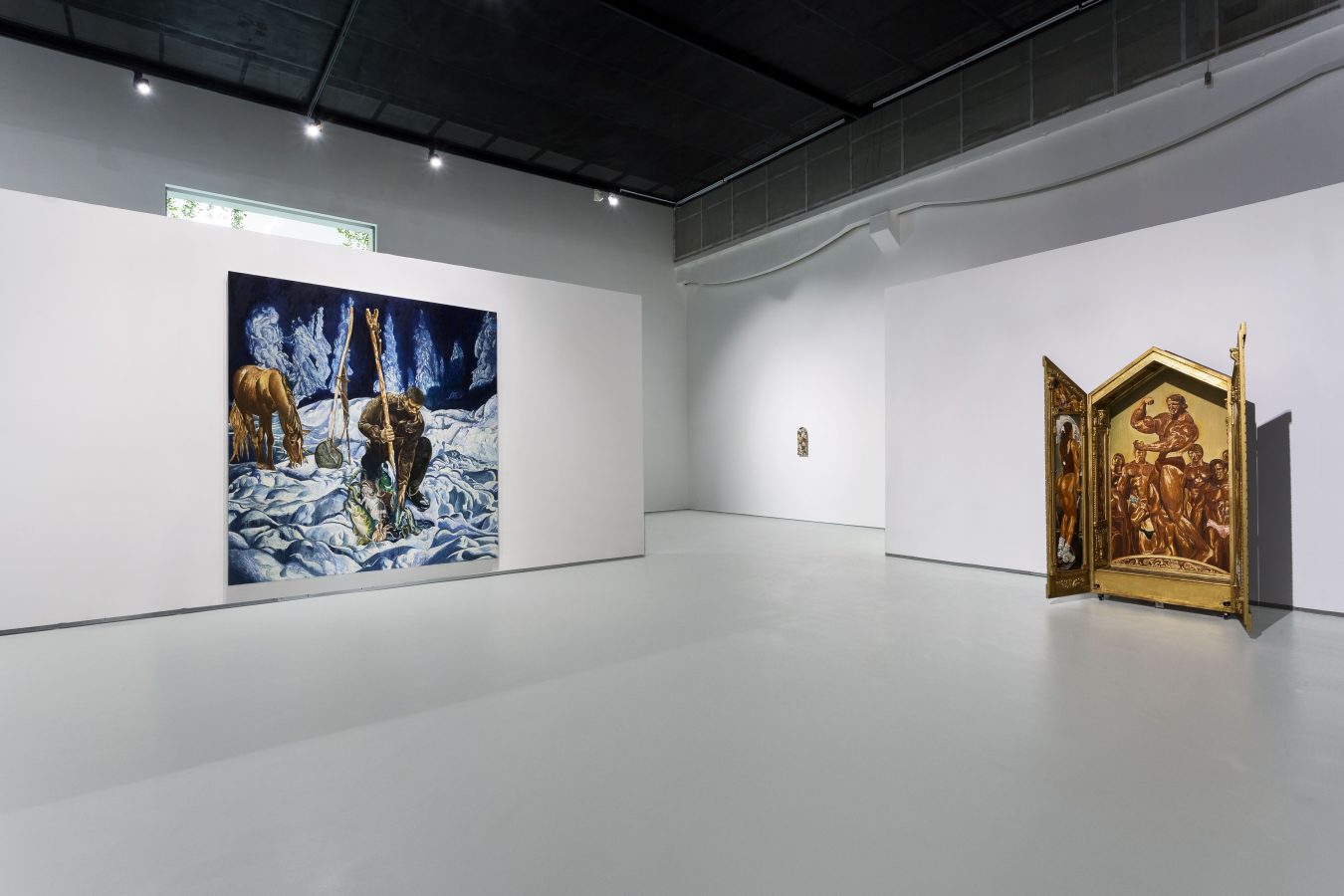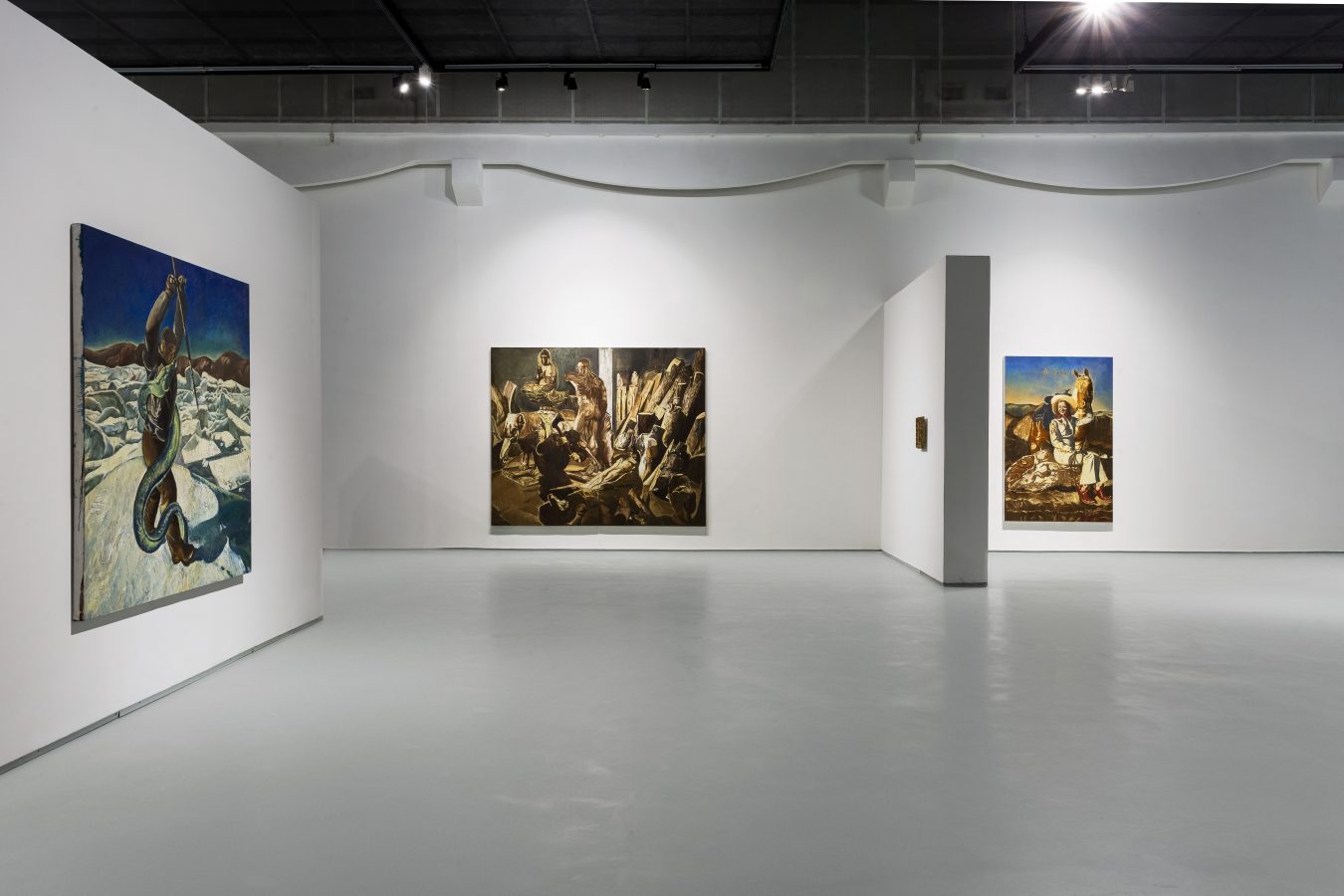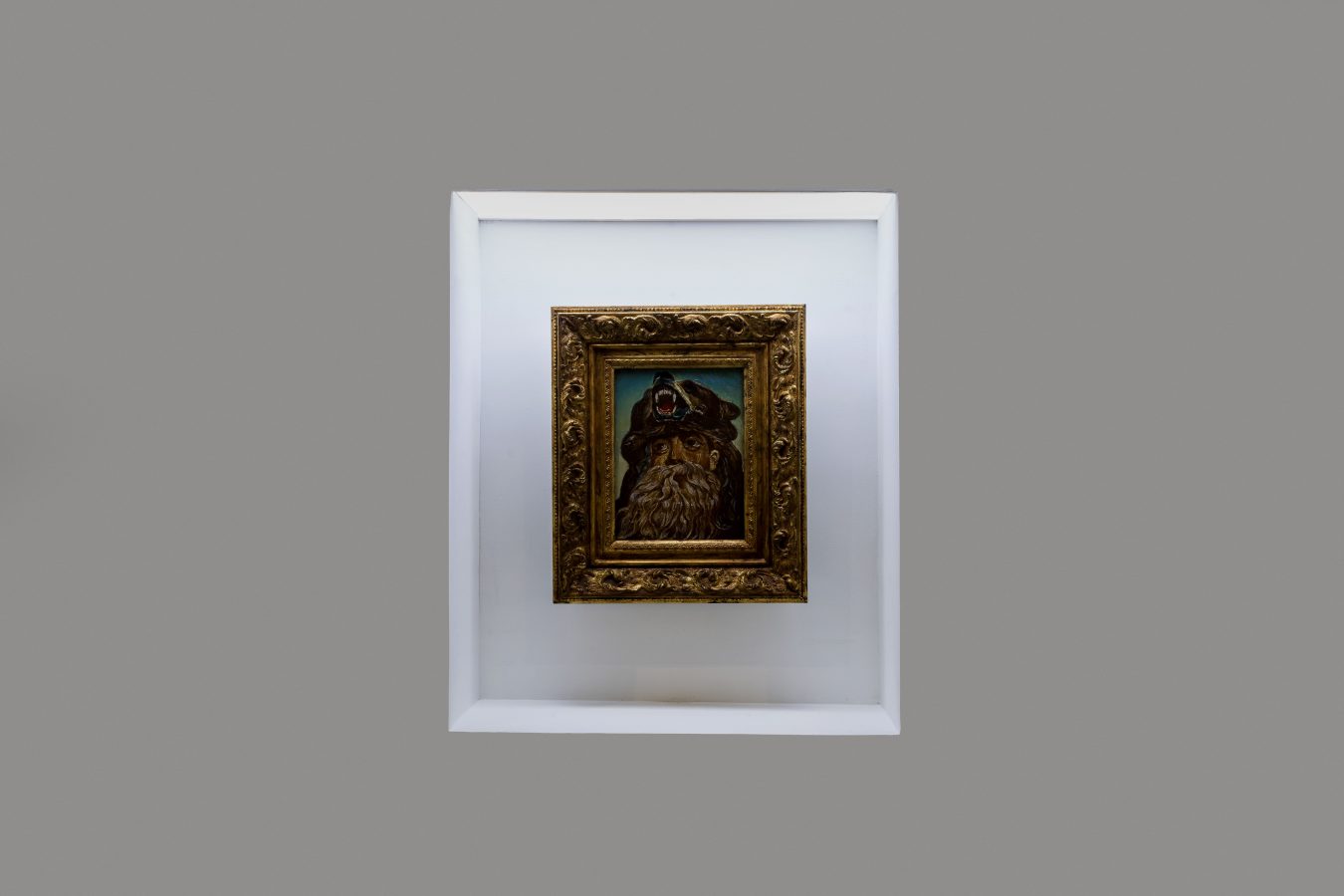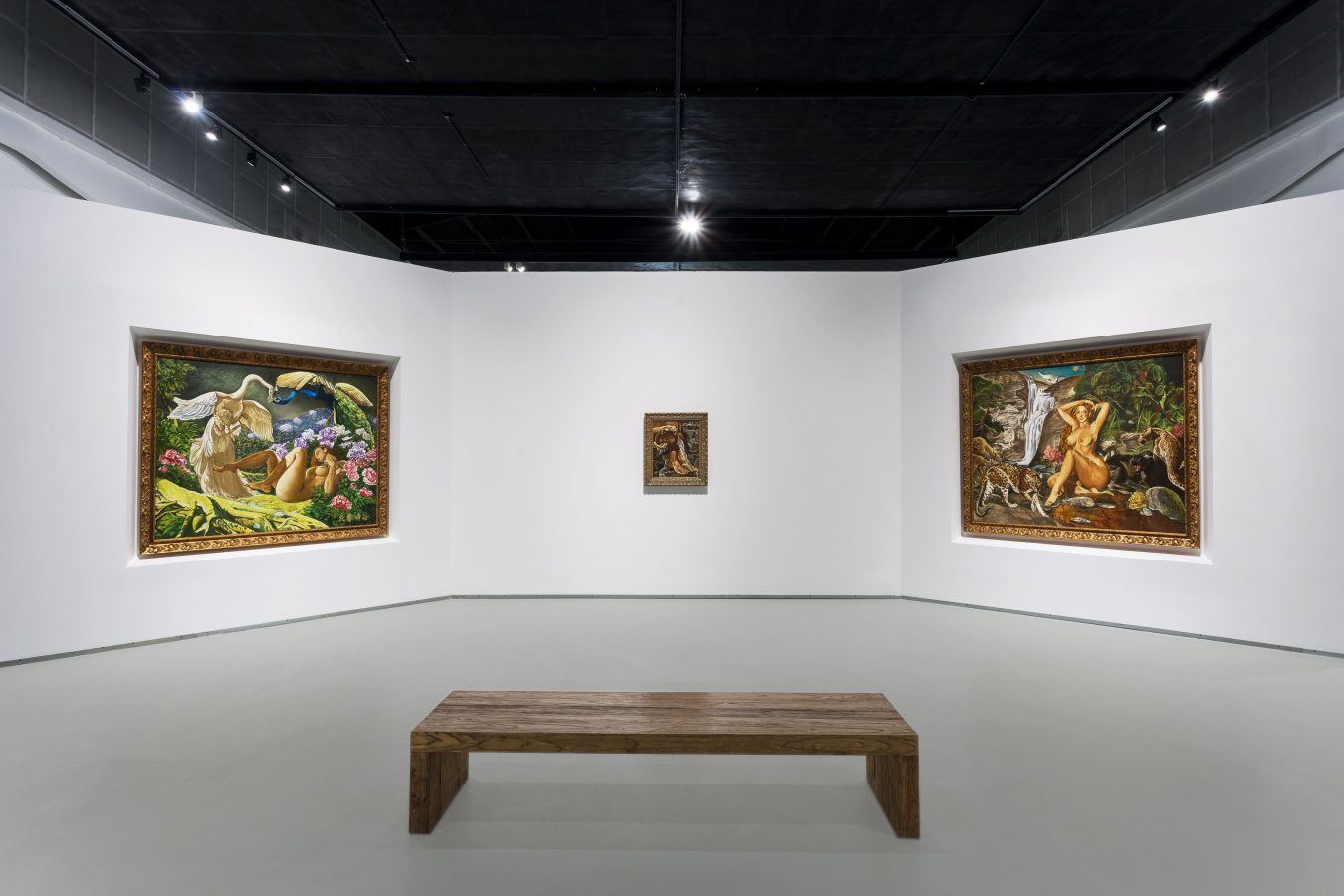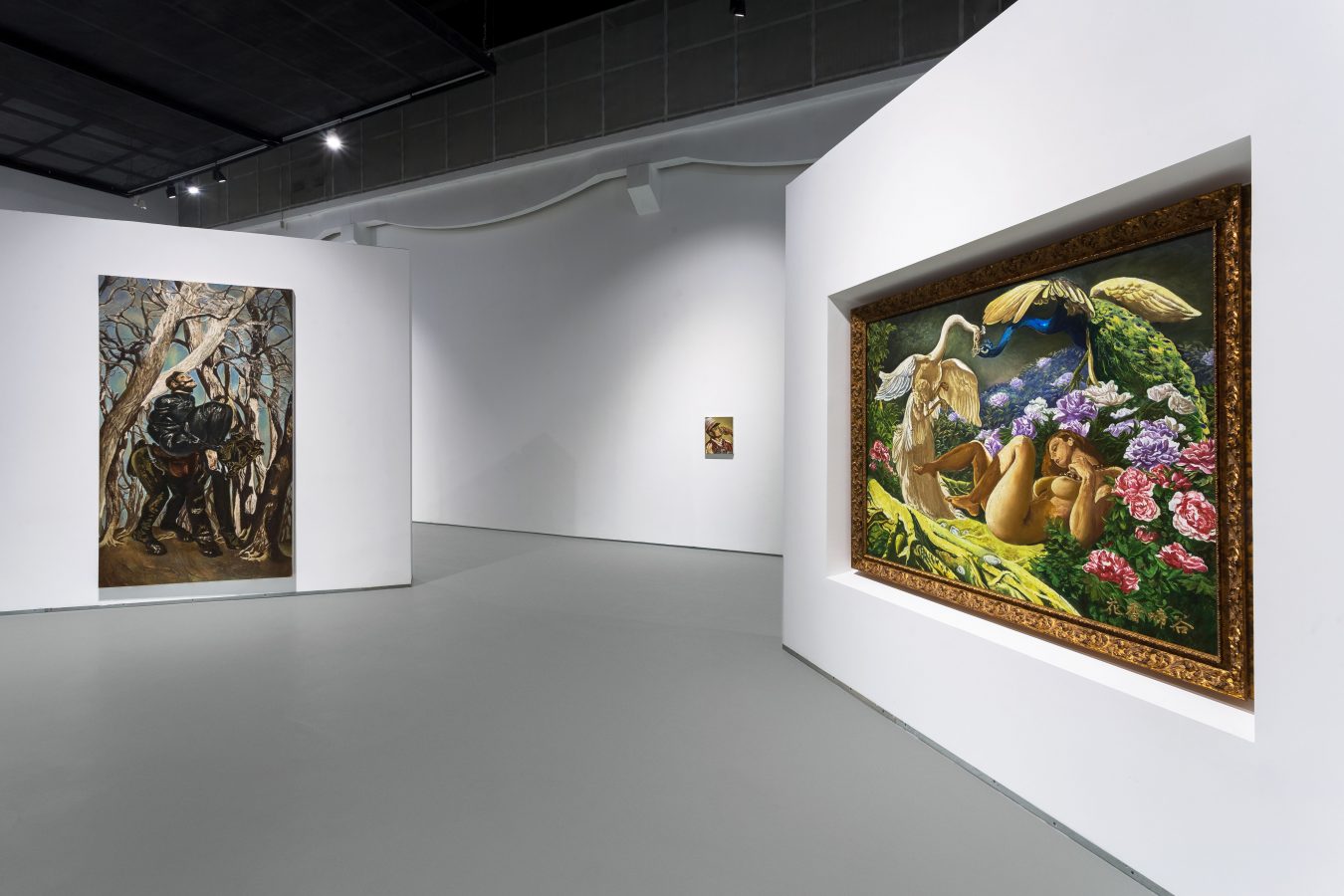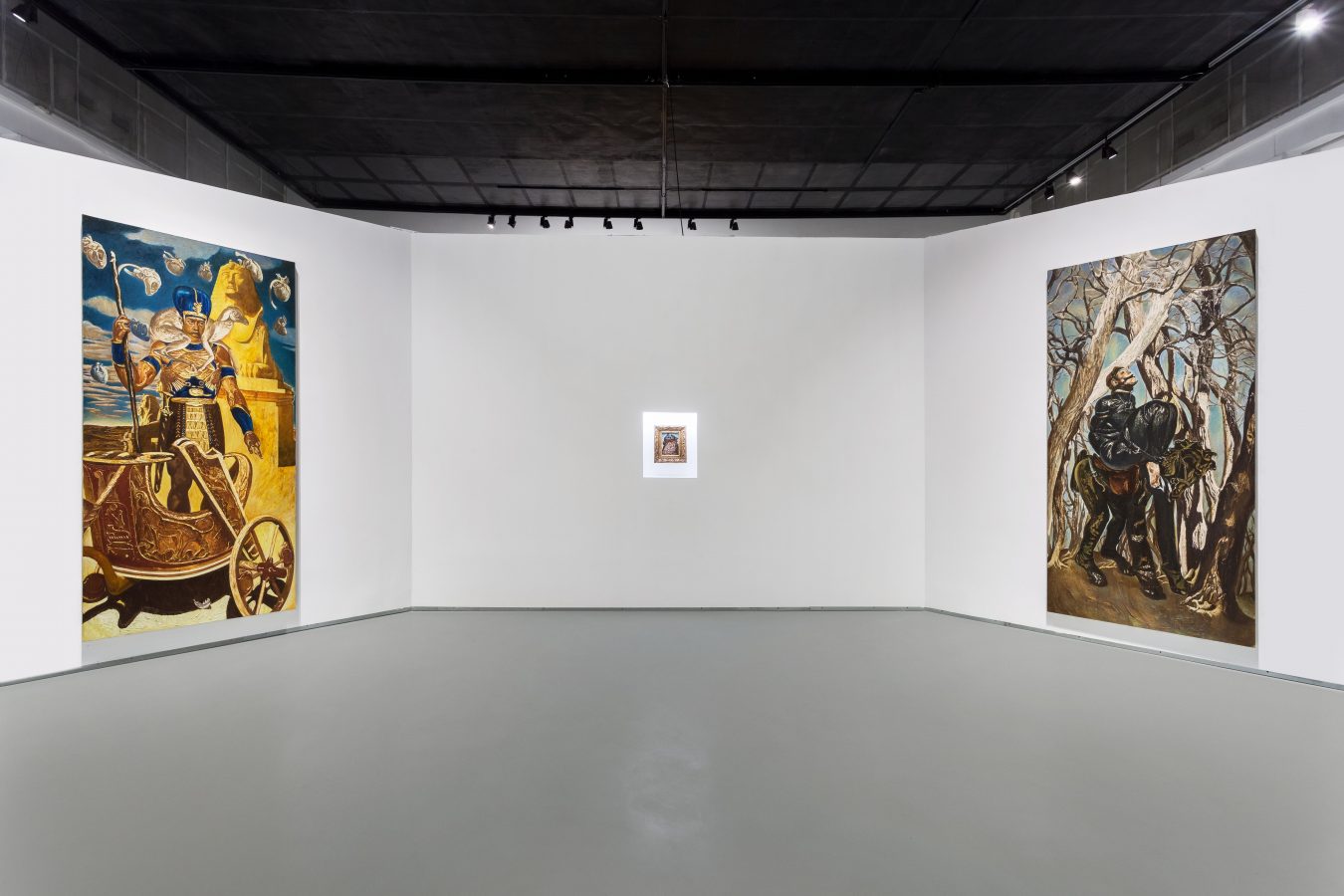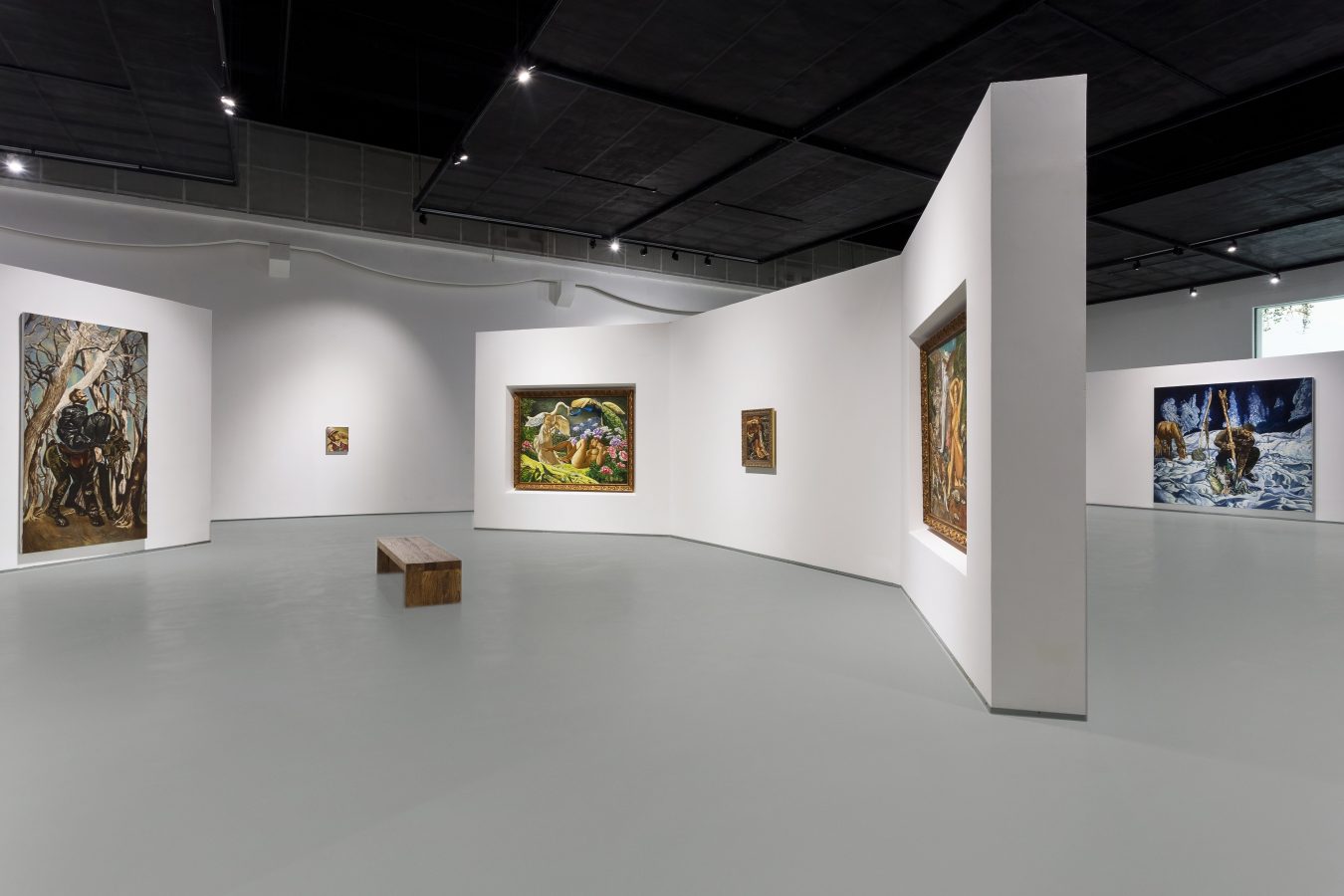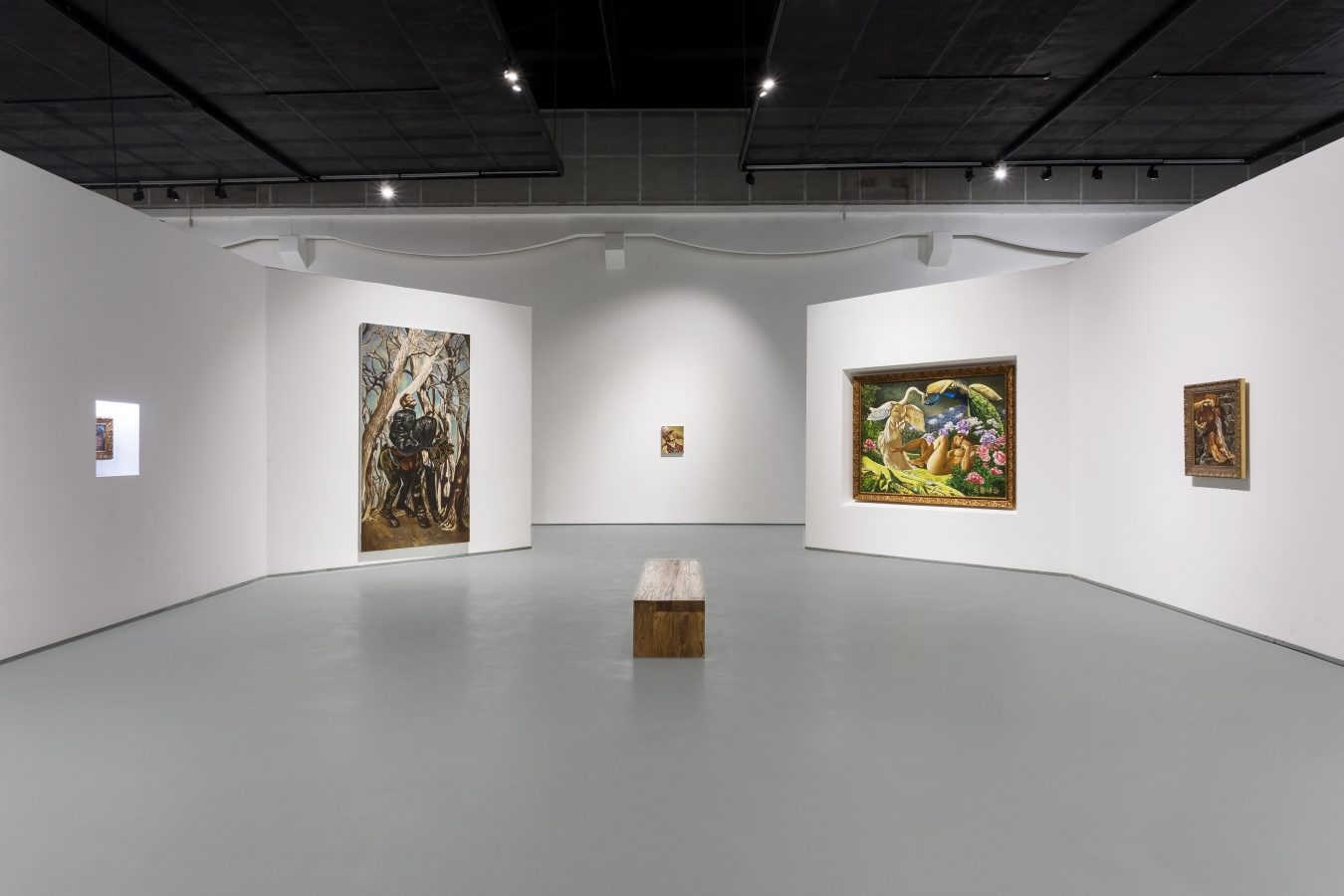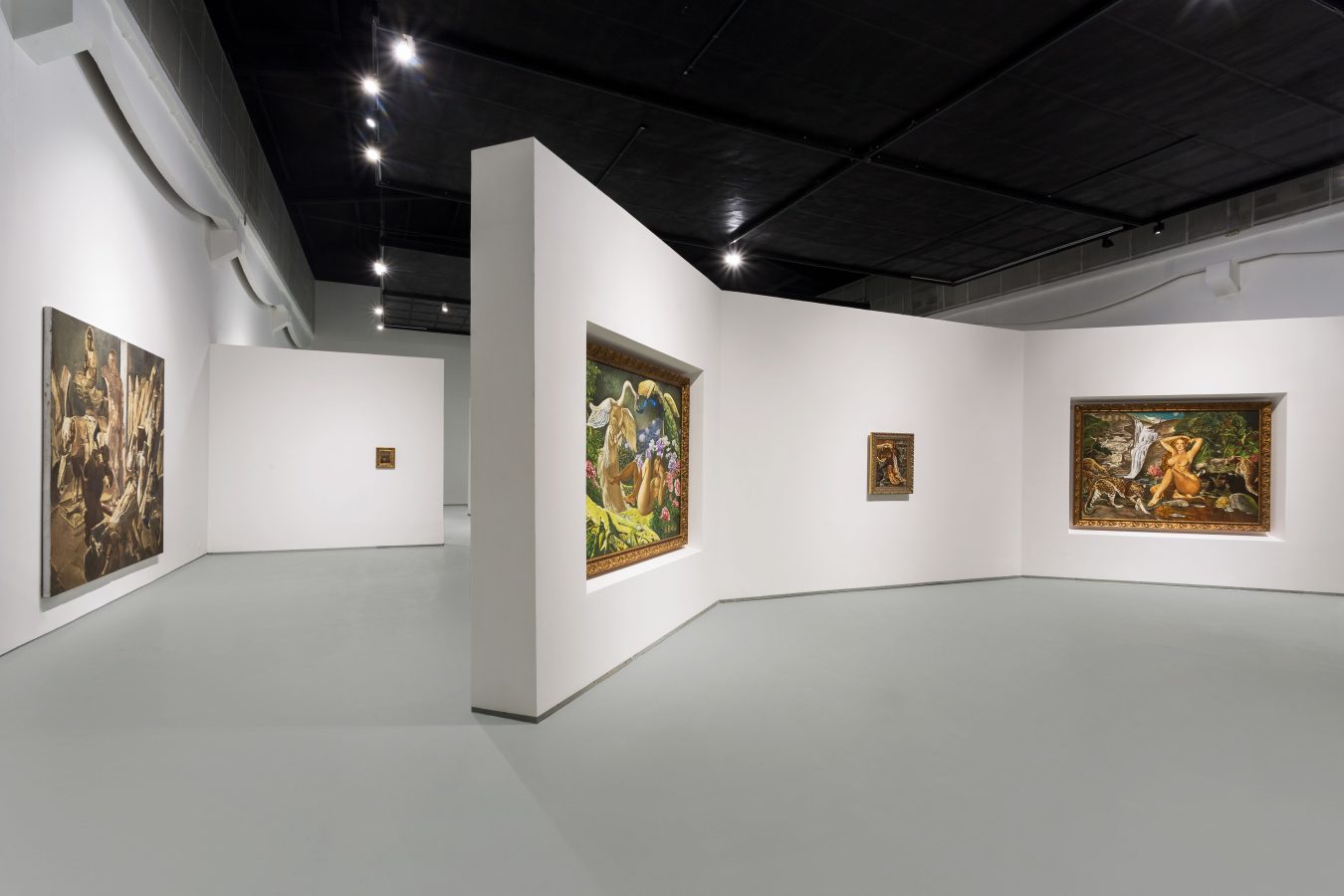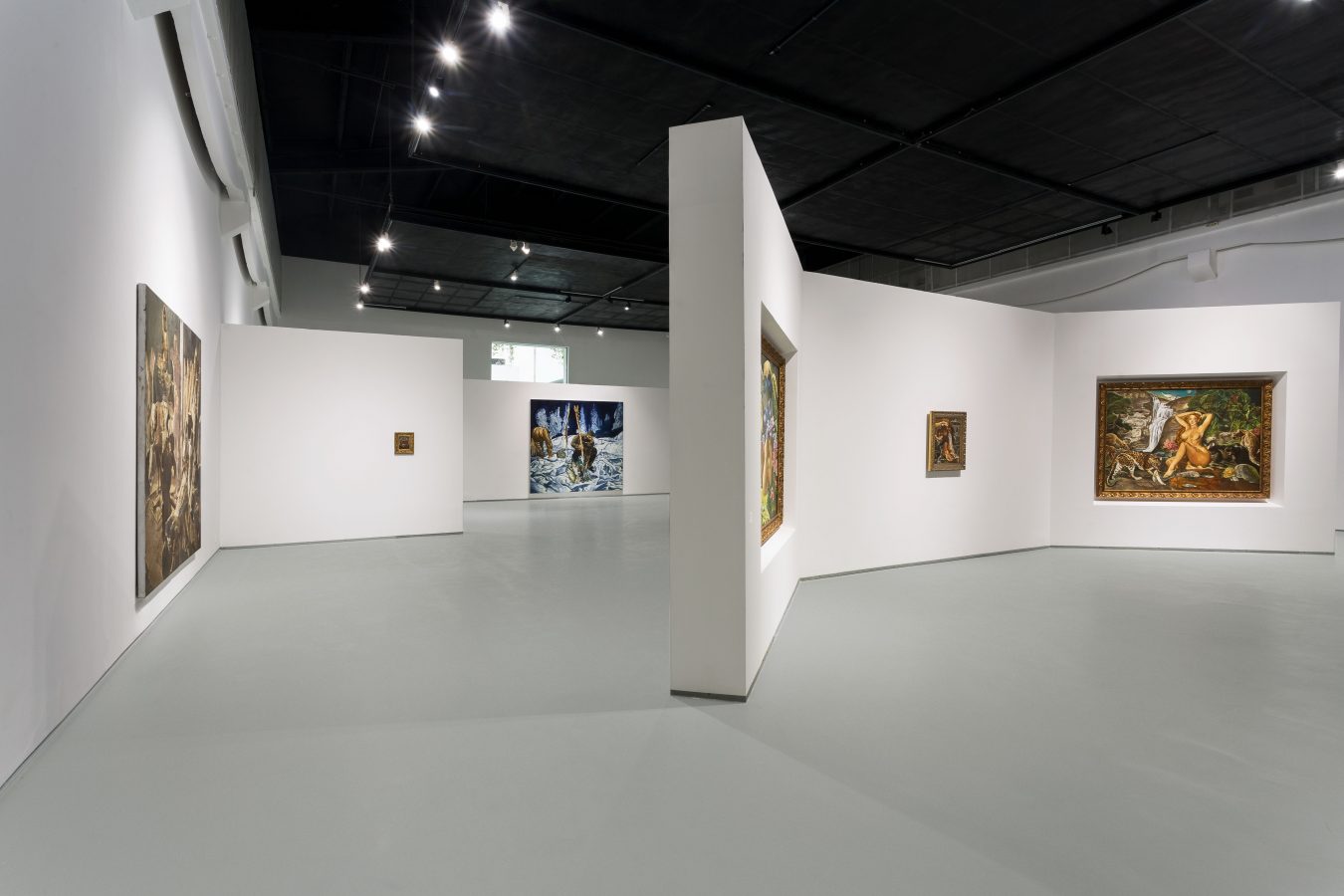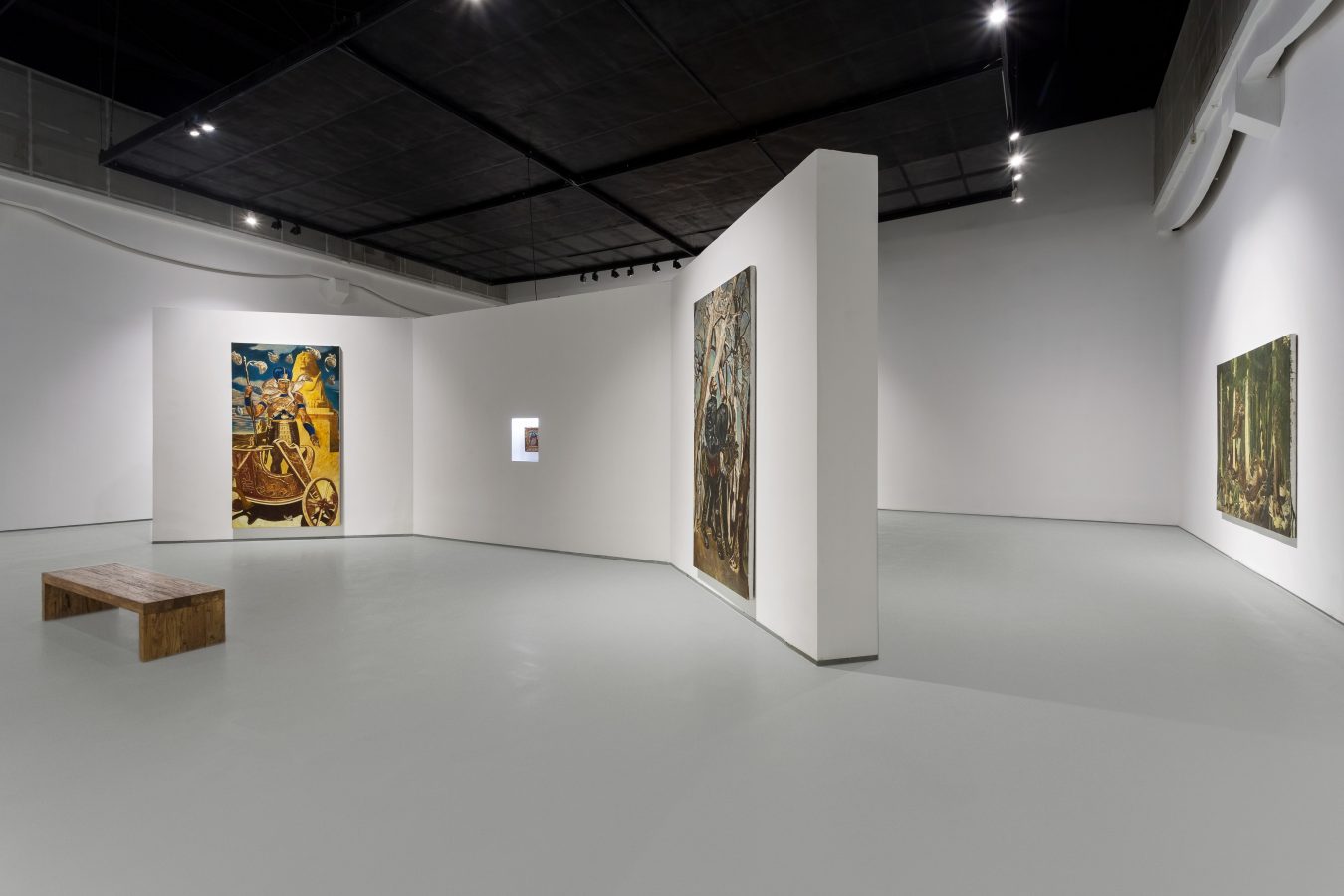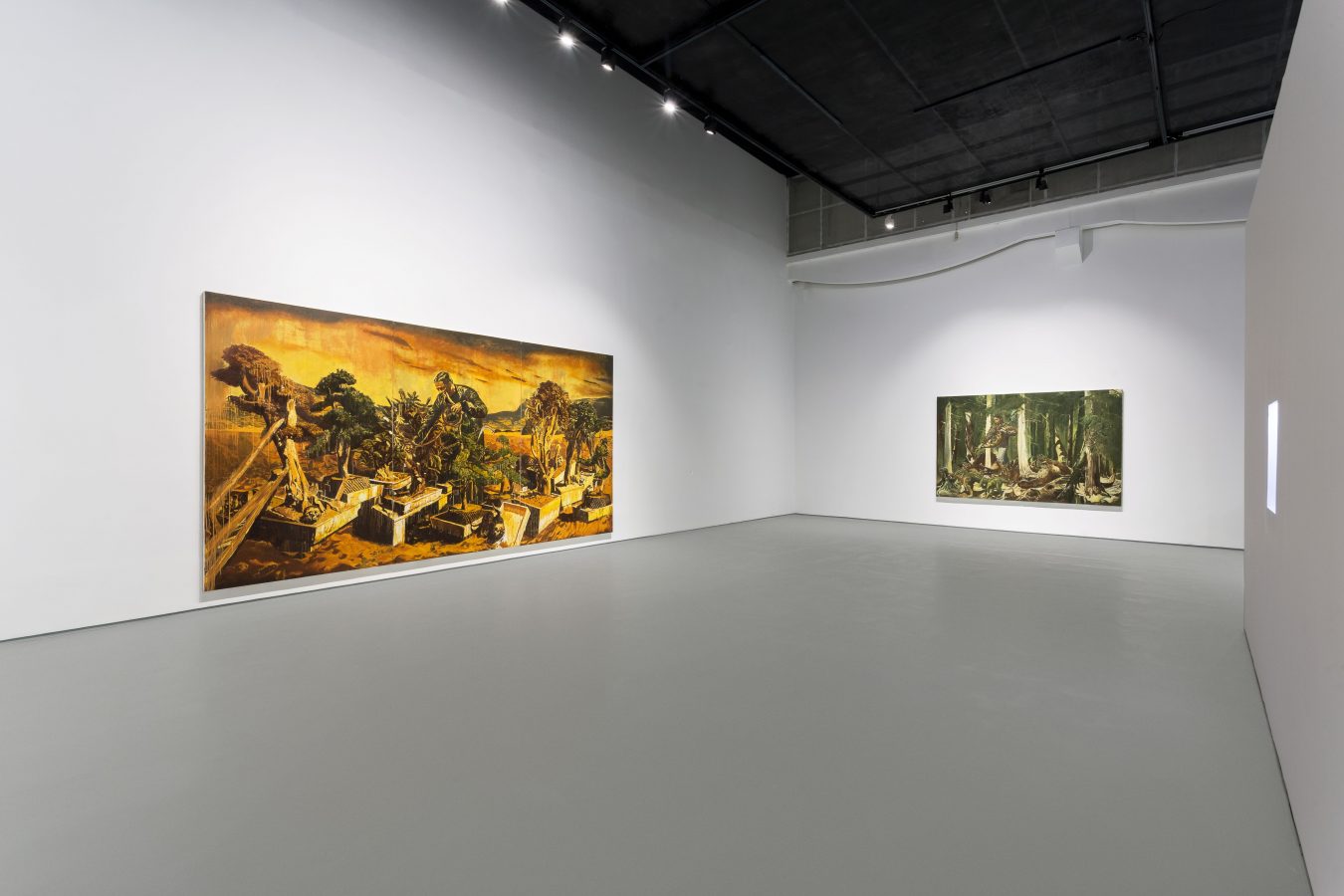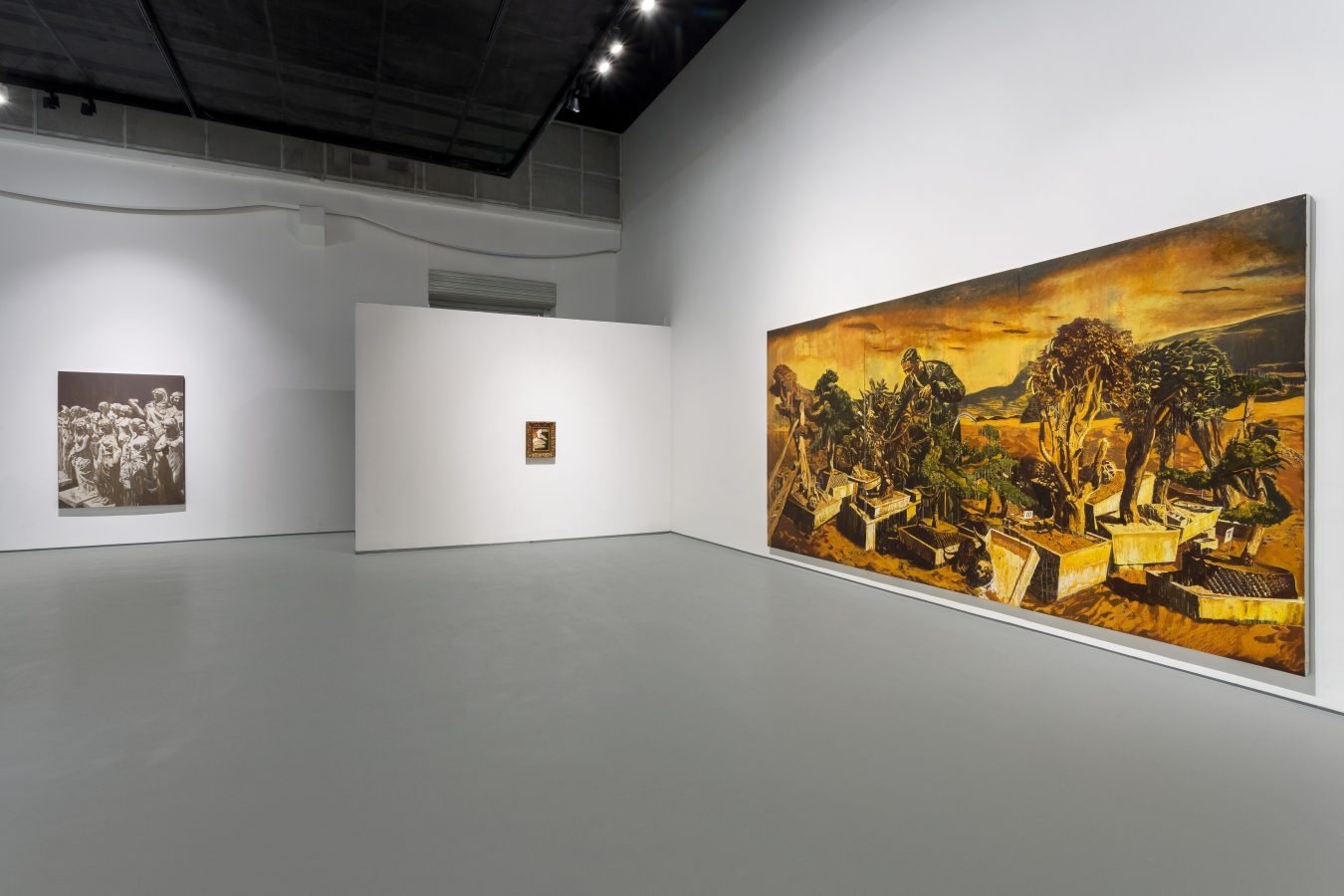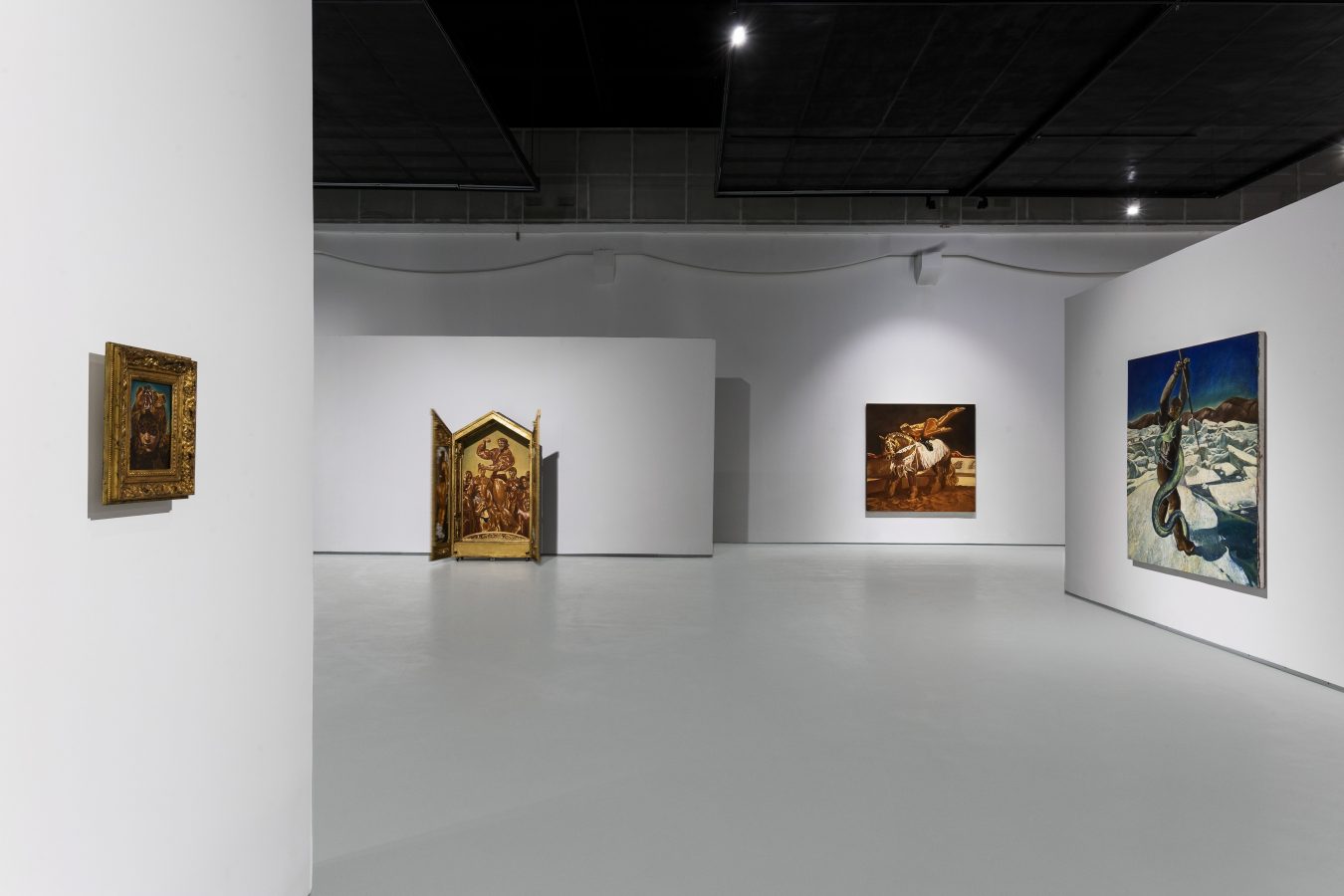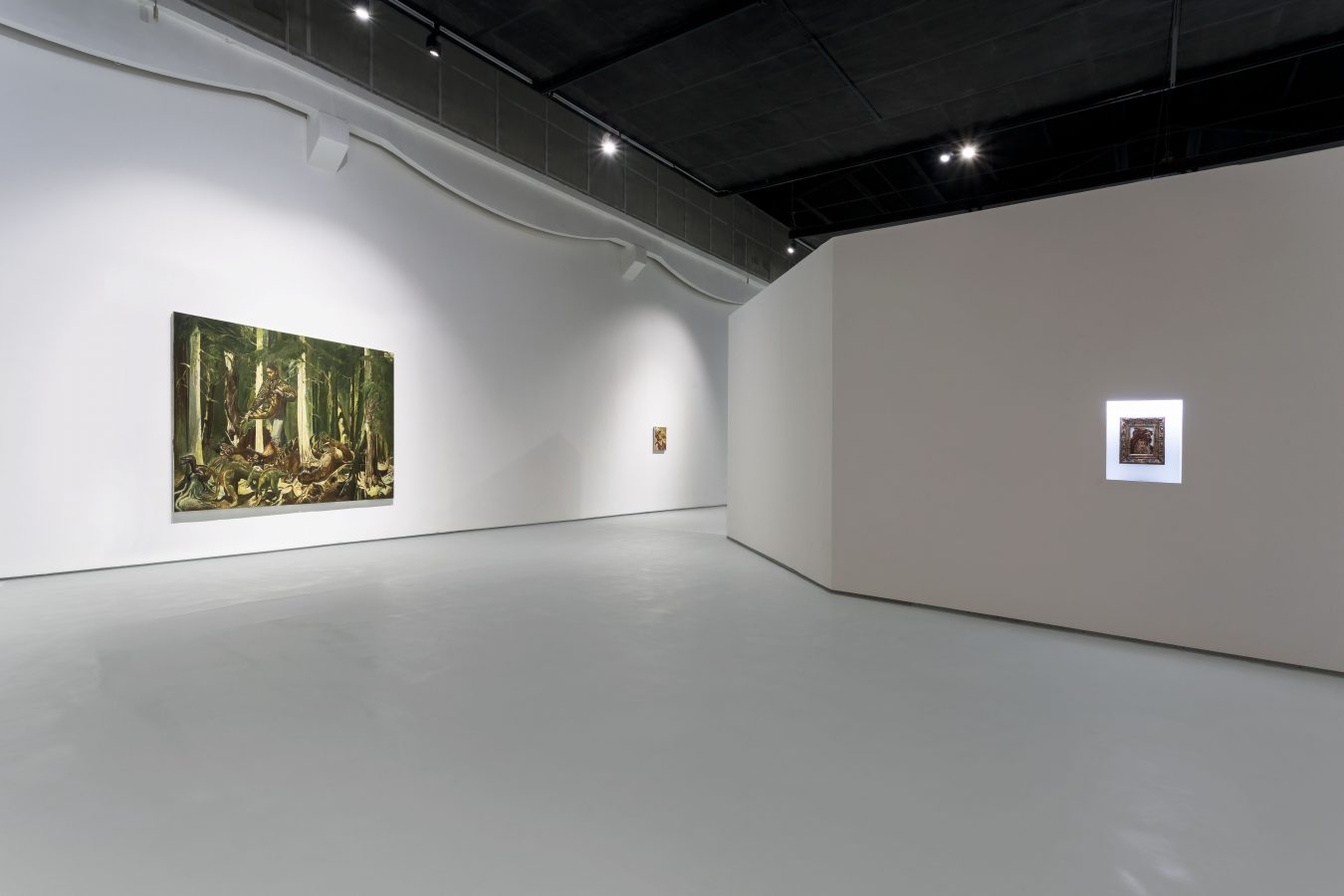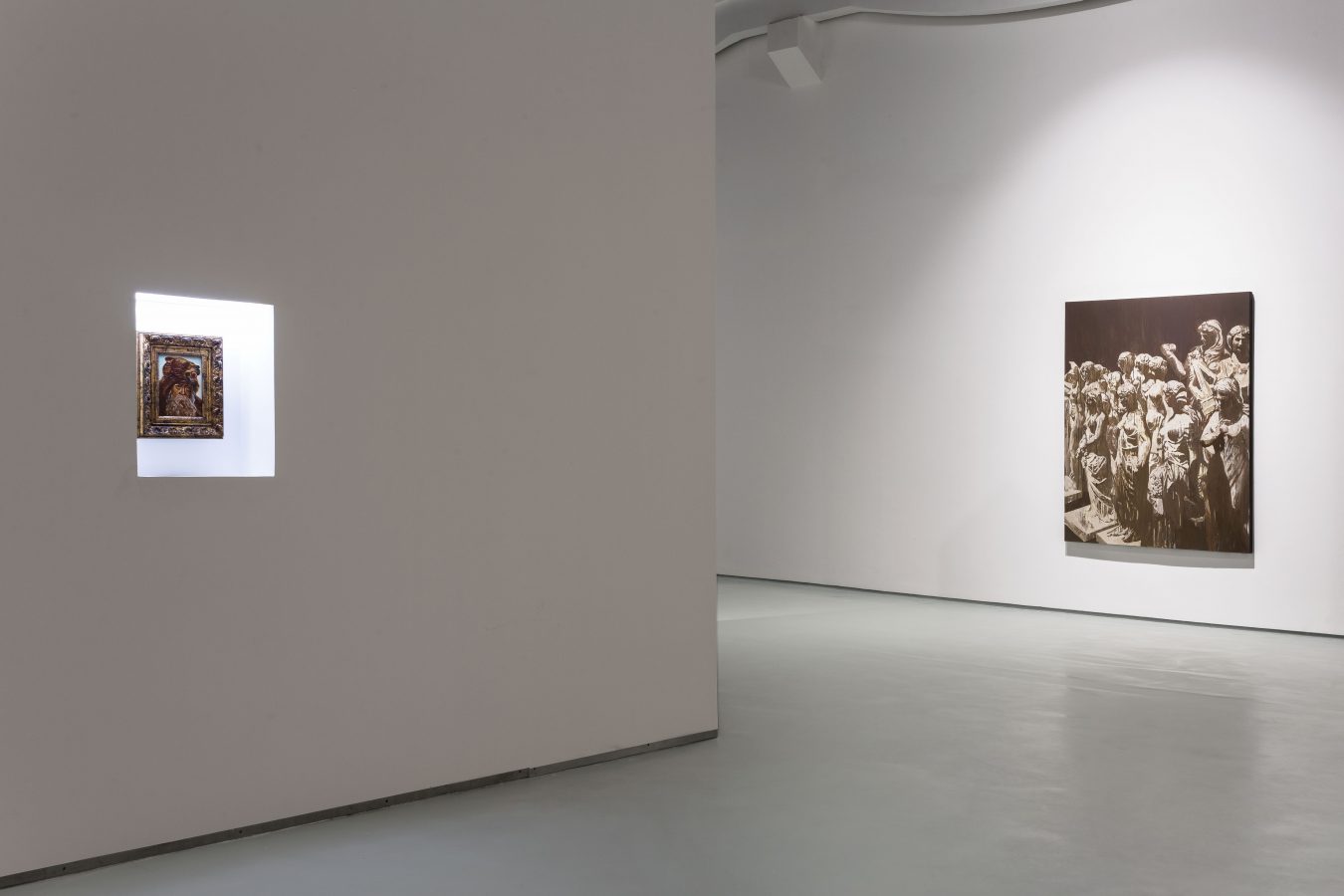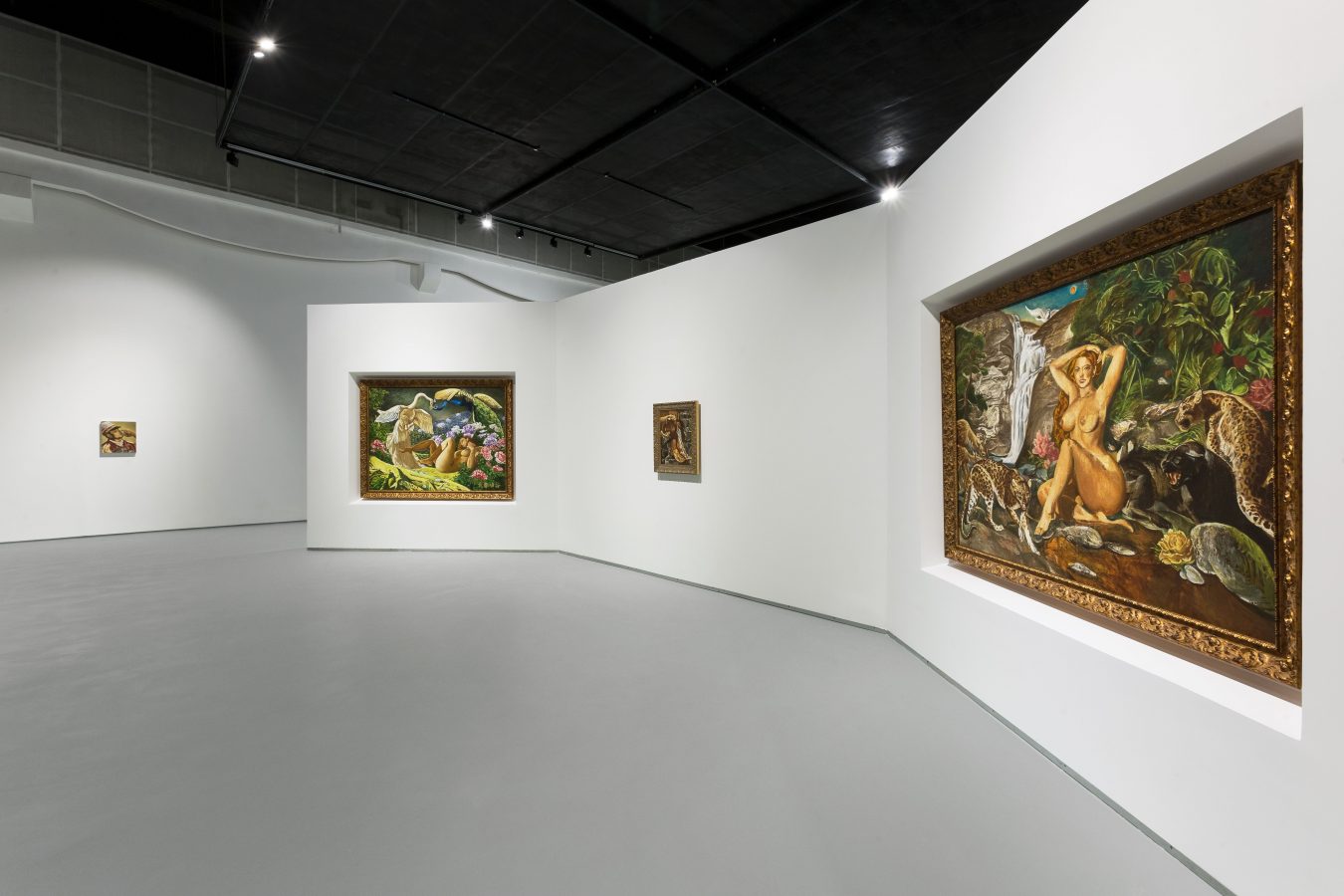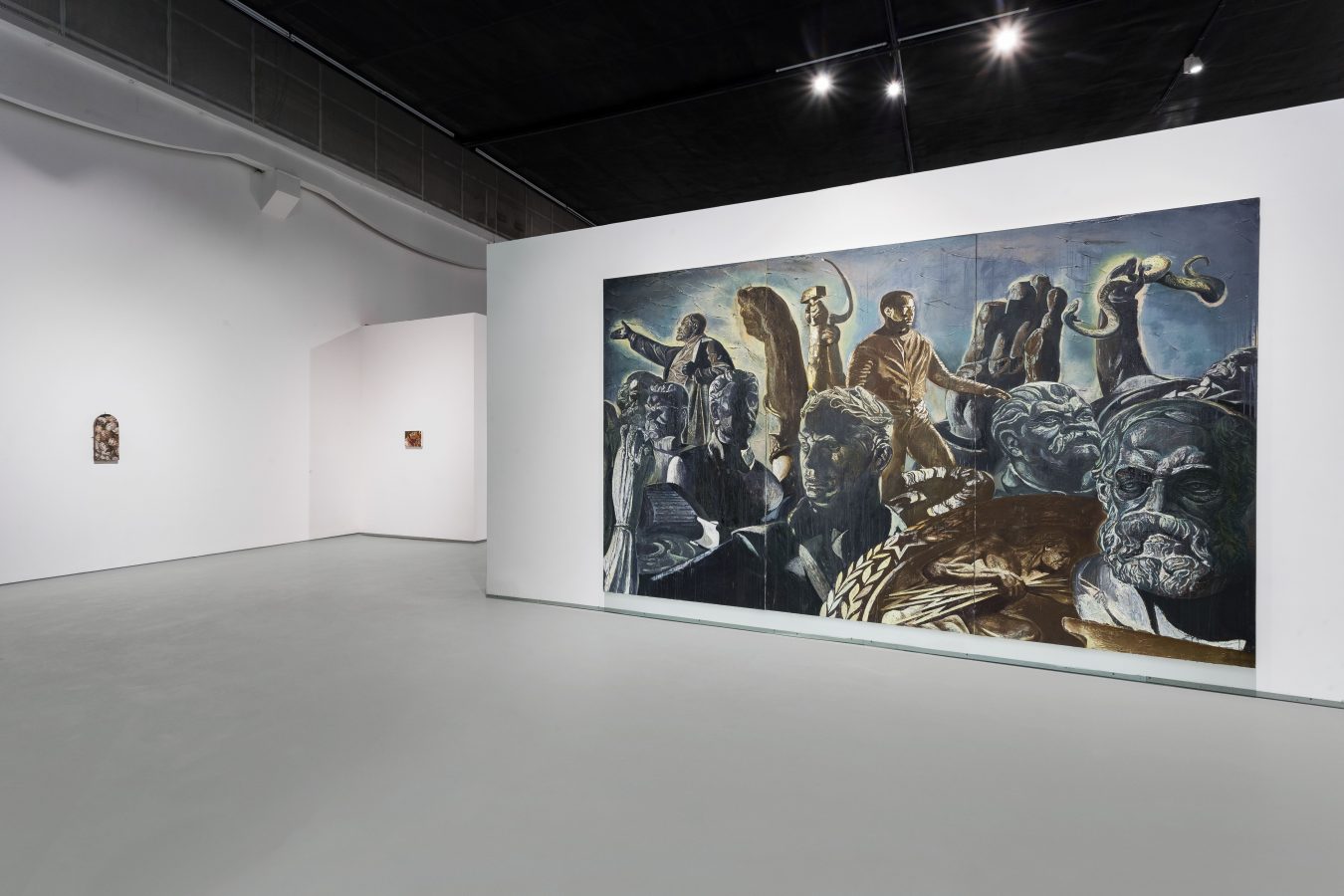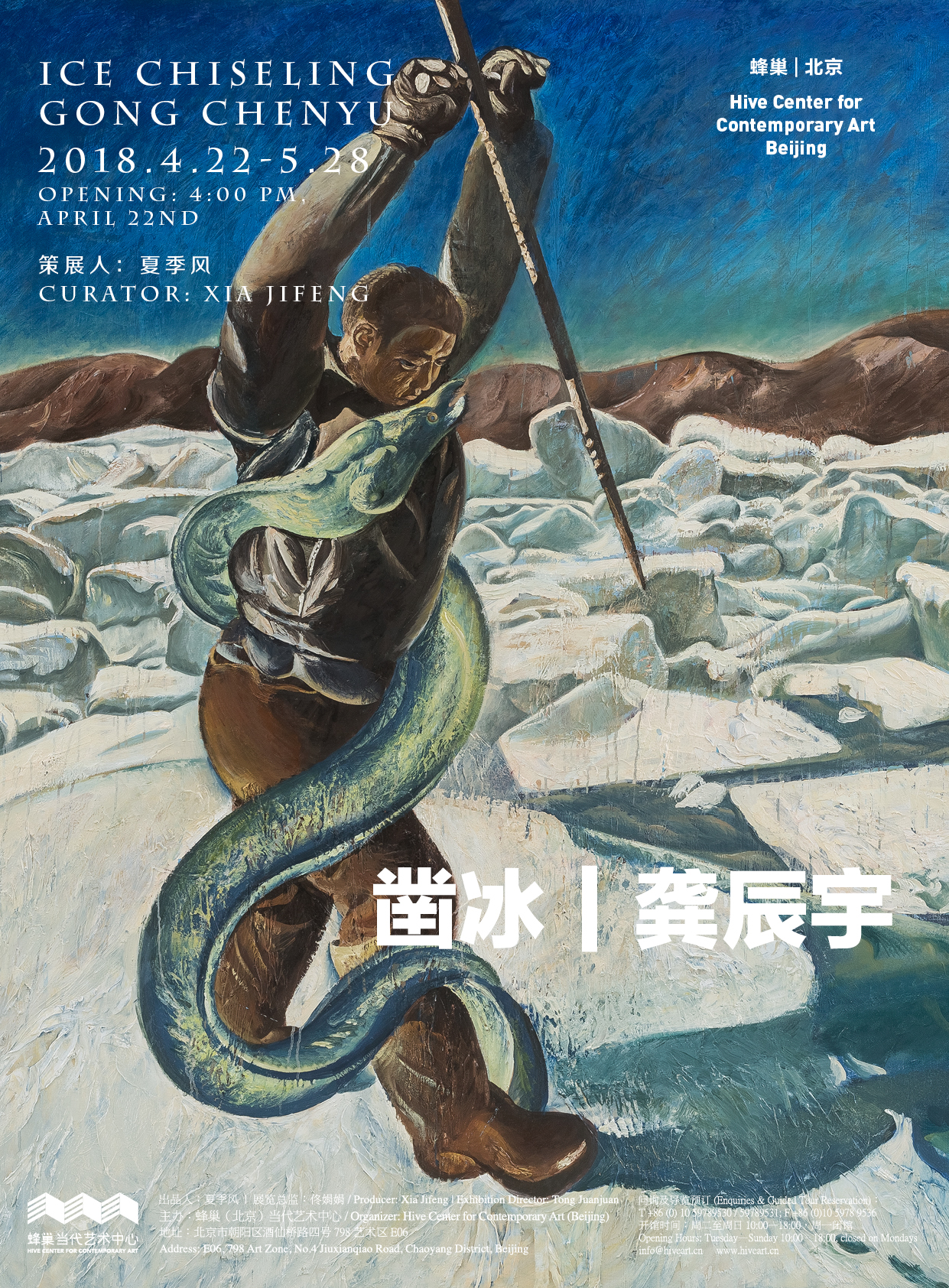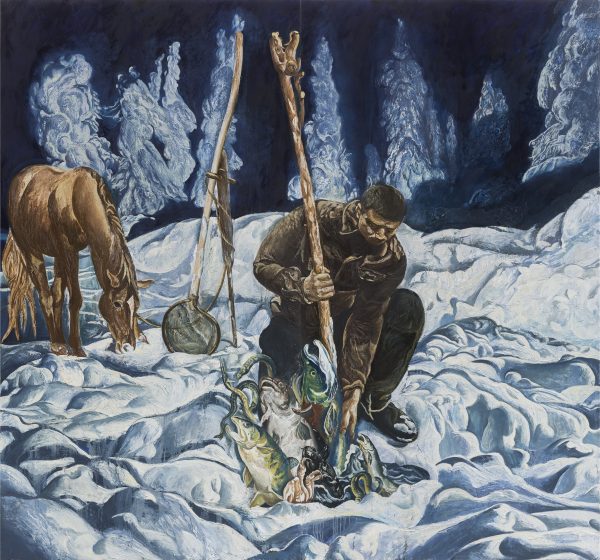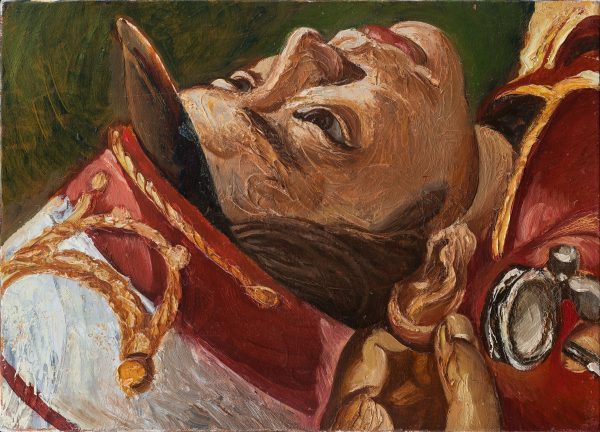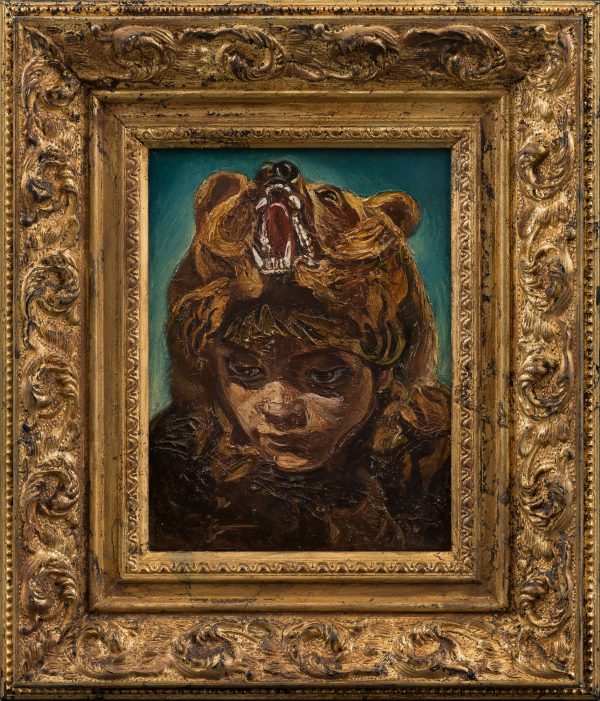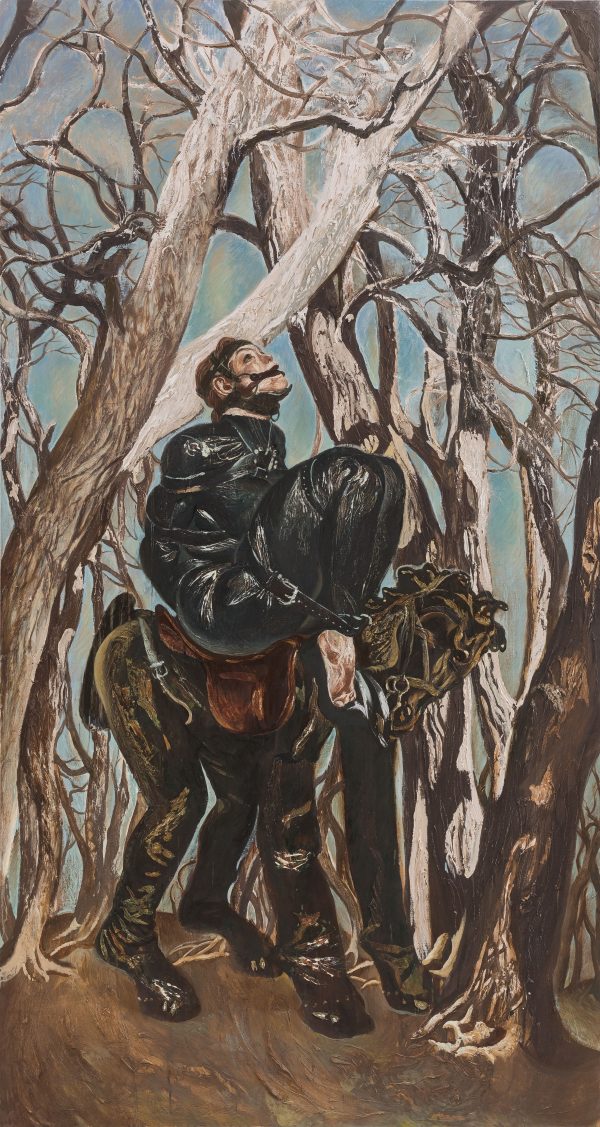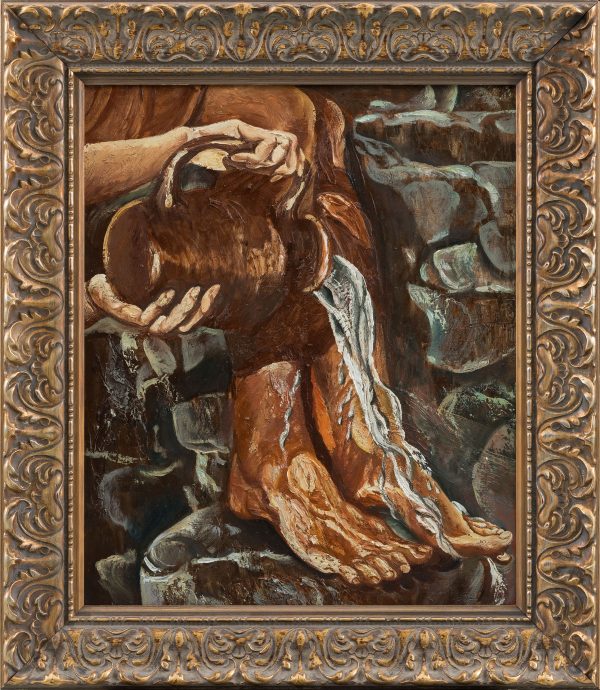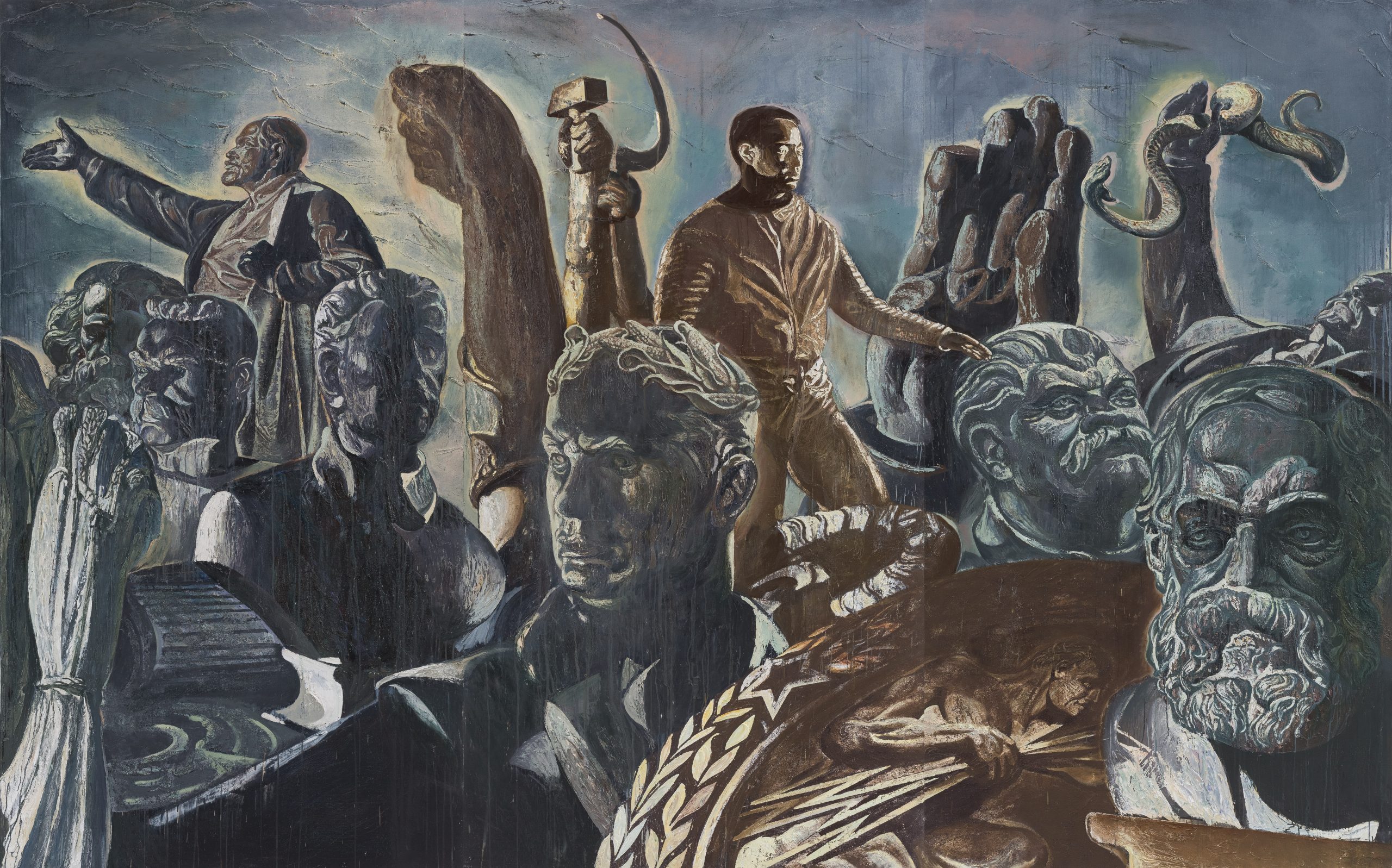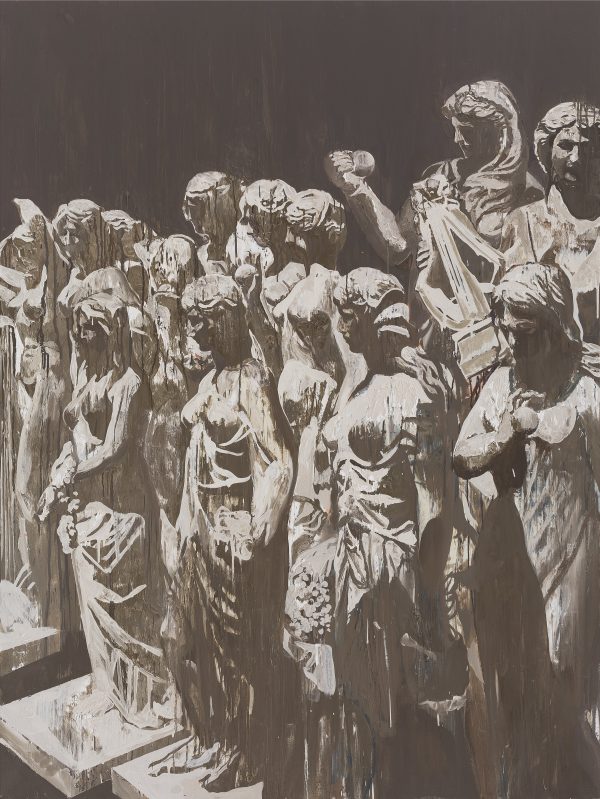Hive Center for Contemporary Art (Beijing) is honored to pronounce that “ Ice Chiseling : Gong Chenyu” will be presented at Exhibition Hall A from April 22nd to May 28th 2018, and mainly to show the “Idol Series” created by the artist. This exhibition is curated by Jifeng Xia.
Born in Tsitsihar, Heilongjiang Province, in 1988, Gong Chenyu gained his BFA and MFA from the Sculpture Department and Oil Painting Department of the China Academy of Art respectively. The five-year training at the Sculpture Department has imbued him with a signature style that distinguishes him from artists majoring in painting only. His painting works often feature heavy volume and thick structures. The reiterative brushstrokes and patterns with a strong sense of presence, obviously, could be ascribed to the influence of his sculptural skills. Display, his first solo exhibition at the Hive Center for Contemporary Art in 2015, attracted wide attention from the art scene right after its opening.
Compared with the Display Series, Gong’s Idol Series retains his signature style on the one hand; and on the other further enhances the sculptural elements in painting. Such a trait is seen clearly in his delineation of human figures. It seems as if three-dimensional patterns are inserted into two-dimensional planes and the visual effect is particularly prominent. Moreover, he has also intentionally tuned down the intricate compositions seen in his previous works, getting rid of the all-embracing way of presentation to make his work purer and more focused. Under the over-arching theme of “idol” we’d be able to figure out several sub-themes which includes “political idols”, “pop idols”, “folk idols” and “saman idols”. In his work, idols do not need people to believe in or worship unconditionally. The figures in the paintings are merely an analogy of the “us” in a different dimension and an illusory projection of the idealized vision of the general public. Meanwhile,his art works are teeming with joy and banter. Solemnity seems to be offset by solemnity, and grandeur is deconstructed by grandeur. And in the meantime, the figures haven’t fallen into the trap of “pop art”. What viewers perceive from the work is the artist’s innocent memory, poetic perception and wild imagination.
Unlike in our childhood, in the contemporary context, it seems idols that used to be worshiped in an uncritical and unconditional manner are gradually detached from fear and reverence that often accompany the mysterious power rooted in totems, sages and heroes in mythologies. Instead, idols seem to have been substituted by politics, enterprises, science, technology, academic research, religion and entertainment. The somewhat awkward situation turns out to become the source of inspiration for Gong Chenyu. In a way, I think it has also laid the foundation for Neil Gaiman’s American Gods. In Gaiman’s work, though the dramatic plot is fabricated, it reflects something fundamental about the belief of this era: the old gods whose late years are pathetic and lonely are almost as feeble and powerless as human beings. But they are trying to fight against, though in vain, the gods of the new time, namely the press, new technologies and the internet. An inevitable fact is that the gods depicted by this American writer undoubtedly fit the notion of “idols” in the most general sense. Compared with the “idols” in Gong Chenyu’s work, we’d realize that there’s a huge gap between the two in terms of cultural and regional perceptions.
As an artist dealing mainly with painting, Gong Chenyu doesn’t put much attention to the dramatic conflicts between the old gods and new gods. As far as he’s concerned, idol in itself contains materiality and spirituality. The indivisibility and unity of opposites between the two intrigues him deeply. Different from the dual-opposition perspective in the American Gods, Gong’s Idol Series manages to get rid of the usual approaches to deal with gods in classical religious painting such as the creation of magnificent sense of ritual and the presentation of the strictly hierarchical system of gods. In other words, he endeavors to avoid excessive sense of affected decoration and rigidly stubborn adherence to classical religious painting. In the meantime, he also keeps a distance from the so-called sense of reality characterized by material desires, mechanicalism and indifference of the era of new gods so as to maintain a sense of warmth which is supposed to be radiating from an idol. It seems that Gong Chenyu somehow wanders in between the conflicts between the old gods and new gods, and then manages to construct an alternative world of gods within this ambiguously atheistic realm – a paradise where human beings and gods co-exist and images of a rich variety of characters come to the fore. To be more precise, these idols are like a metaphor that is both real and illusory, and people can hardly resist their reliance on them. With his remarkable mastery of the skills and language of painting, Gong Chenyu tries to inspire some kind of nostalgia rooted in human society through these idols. But his purpose is not encourage it, but on the contrary to wipe it off, or say, to keep a distance from such nostalgia, in the hope to propel people to re-think and reflect on the meaning of idols. And hopefully, it would remind and enable human beings to walk out of the lonely grottoes that we are proud of, and open up a richer and broader multi-dimensional space.
